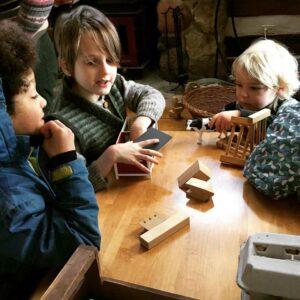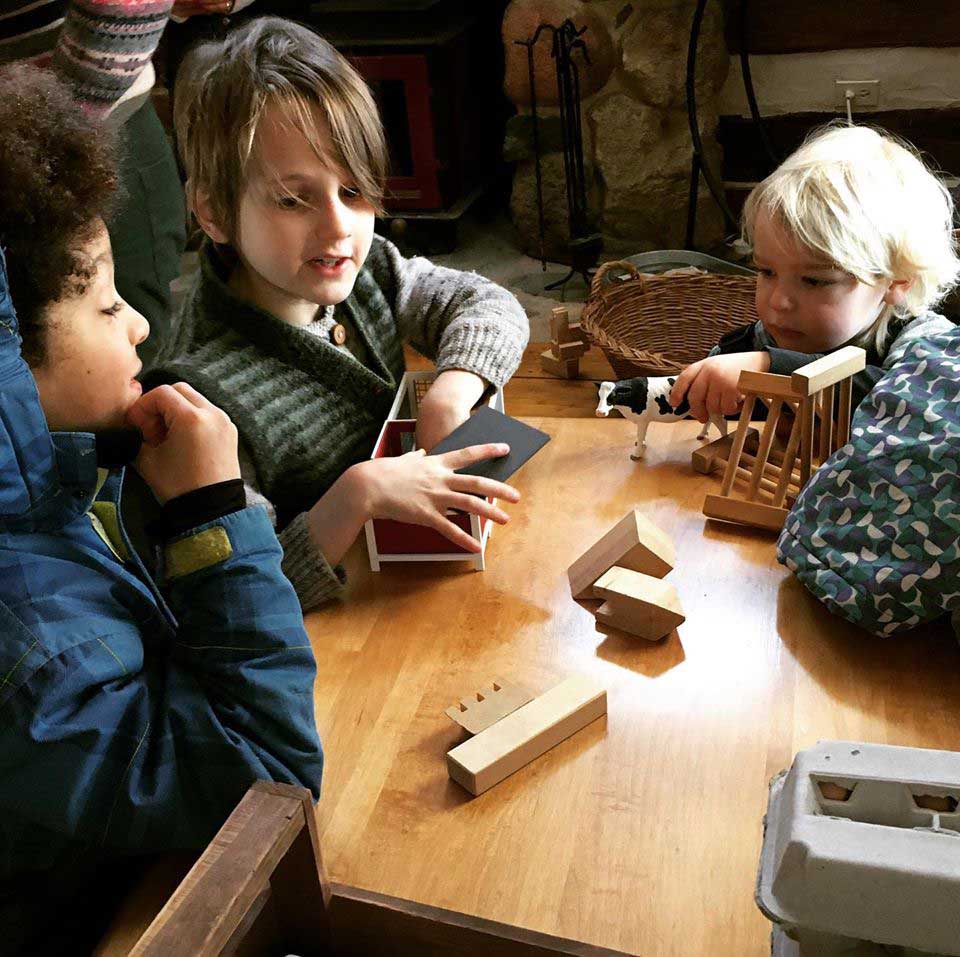February 19th, 2023
In this week’s article, we examine the developmental aspects that emerge as Social Ability begins blossoming in the ages of four and five. It is the fourth article in a series that will focus on the development of social ability throughout early childhood.

Our children grow so rapidly through these first years of life, it’s hard to “keep up” with what we are seeing in the context of their larger development; and, yet, it really helps to see and know this scope when we are facing challenges with them. This really comes to mind when I think of the shift from three to four and five.
If we consider the birth of consciousness coming in about the age of three, we can observe how the child is trying to “build a home” within their bodies with this consciousness. Simultaneously, they are becoming aware of the world surrounding them and are delighted to explore it.
In traversing this landscape of new consciousness, the four year old tends towards extremes. Extreme joy and exuberance in one moment, and in other moments, behaviors that can be mistaken as intentionally “naughty,” such as lying, bossing, or swearing. As they begin developing friendships, these, too, can be extreme in nature. “Landon is my friend, not yours!” or “I only want to sit with Ariya!” can be mistaken as rudeness, but if we observe more deeply, we see a deep love for each other. It is our task to harness this love, and to guide our child to expand this love to everyone. We balance giving the child time to relish in their newly found friendship, with opportunities to cooperate in a larger group setting with structure or adults nearby for guidance with conflict resolution.
Often the five year old, especially as they move toward six, has settled into the world and into their friendships with more balance. They are becoming aware of their surroundings so quickly, and experiencing it all internally. As with the four year old, all that is seen is imitated, but with a thread of individuality woven in. Their houses, play scenes, and story shows become more and more elaborate, and peers are largely accepted as part of the team in creating them. And with loving adults nearby to help navigate disagreements, they are well on their way to learning true cooperation and creative problem-solving that will serve them for a lifetime.
In a mixed-age setting such as our early childhood, children are nourished and empowered by the “extended families” of their school friends. The younger begins by contentedly observing, and as they grow, insist on being included. The older children learn to extend their circle of friends, and reflexively, their capacities of harmony, empathy and love. They offer richness and depth to the group play and are empowered to lead.


Admittedly I am a little late on this but I am watching my 4 yo grandson with much of the above and so want him to have the opportunity to become who his is in a whole and peaceful manner. Waldorf was part of my vernacular when raising my children but we never lived near a school and I was a working mother.
Now I am assisting a group of parents and school in Merida Mexico who are intending to be Waldorf.
I have been combing the Waldorf Association Sites and find them a little hard to figure out as to how to be connected either for my little school in Merida or as the grandmother of two budding boys.
Any suggestions? I would love to connect with Louise de Forest. Thank you!
(Yes, I have signed up for this newsletter.)
Dear Maria,
Are you aware that we have a sister organization, LifeWays America Latina? Both of our organizations have a variety of courses that would support your school and your grandparenting in Merida. Unfortunately, I do not have a way to connect you with Louise de Forest.
Best of luck,
Acacia Moore, LifeWays Blog Editor